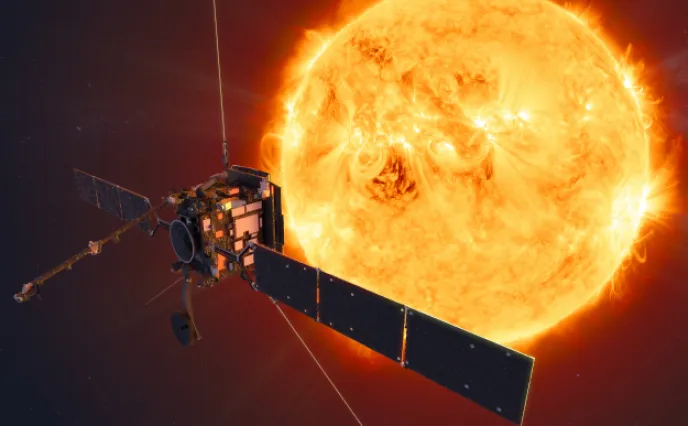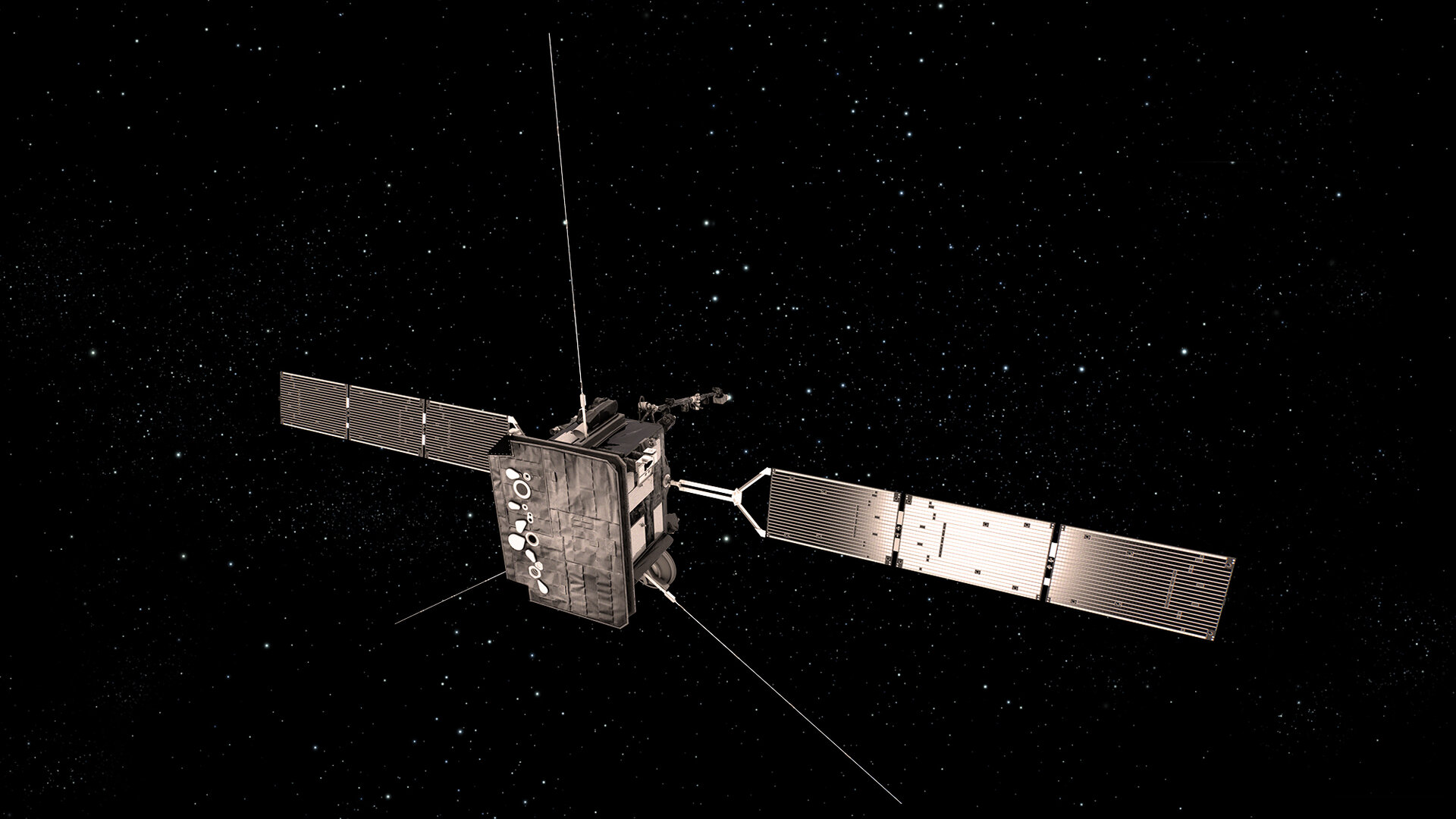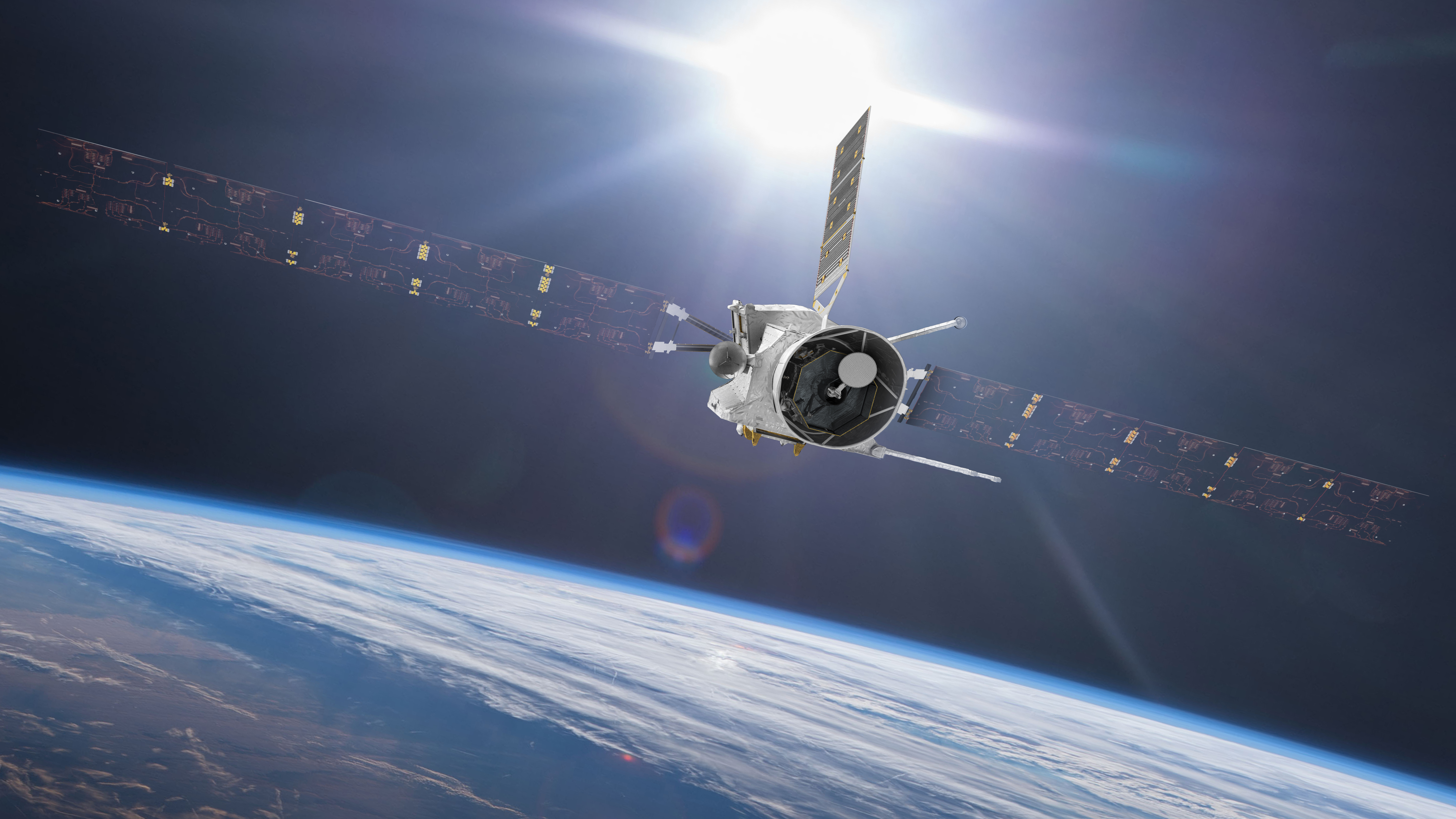Solar Orbiter and BepiColombo cross paths near Venus

Solar Orbiter and BepiColombo cross paths near Venus
Solar Orbiter and BepiColombo cross paths near Venus
On August 9 and 10, the two European Space Agency spacecraft Solar Orbiter and BepiColombo will both fly by Venus, just 33 hours apart.
ESA will provide close coverage of this rare occurrence on its social media channels (@ESASolarOrbiter, @bepicolombo, along with @ESA_Bepi, @ESA_MTM and @JAXA_MMO, and @Esaoperations).
Solar Orbiter – getting close up and personal with the Sun

Launched from Cape Canaveral on February 10, 2020, Solar Orbiter is a joint mission between ESA and NASA, using a spacecraft developed by Airbus Defence and Space. A number of partners from both industry and academia have contributed to the spacecraft, with Thales Alenia Space playing a critical role.
Solar Orbiter will be observing the Sun from closer than ever (42 million kilometers) to help us better understand the solar atmosphere and its impact on Earth.
Thales Alenia Space designed and built a highly effective heat shield to protect the spacecraft and its instruments from the tremendous heat, while also providing a direct view of the Sun. The high-temp black painted shield is made of several protective layers of titanium and it is further isolated from the satellite by a combination of thermal blankets, an aluminum honeycomb core and titanium star brackets.
Thales Alenia Space also teamed up with OHB Italy as co-prime to supply Metis, an innovative coronagraph developed by an international scientific consortium with support from the Italian space agency. Metis will image the corona simultaneously in both visible and ultraviolet wavelengths to reveal new structural and dynamic details of the solar atmosphere at a range of 1.7 to 9 solar radii from the Sun’s center. By analyzing these images, scientists can study the links between the behavior of these regions and space weather in the inner Solar System.
Based on the instrument’s unprecedented temporal coverage and spatial resolution, these observations will enable us to study the structure and dynamic behavior of the corona, finally distinguishing its intrinsic characteristics from the effects of solar rotation.
BepiColombo – en route to Mercury!

A joint mission by ESA and the Japan Aerospace Exploration Agency (JAXA), under ESA leadership, BepiColombo will help the scientific community better understand how the Solar System and terrestrial-like planets are formed. Since Mercury is the closest planet to the Sun, its evolution could be an important piece in the puzzle. Mercury is a planet of extremes, and NASA’s Messenger mission has already shown that it is very different from what scientists expected. The data provided by BepiColombo will complement observations by Messenger, helping us answer the many mysteries still surrounding Mercury.
The main challenge of the BepiColombo mission is of course how to deal with very high temperatures: Mercury is only one-third of the Earth’s distance to the Sun, and the solar radiation in Mercury’s orbit is thought to be ten times more intense than near Earth. The spacecraft will have to withstand temperatures exceeding 300°C during its mission, with local excursions on the antenna reflector exceeding 400°C, while its electronics and instruments have to operate at temperatures ranging from 0° to 40°C. Engineers therefore developed special high-temp protective devices, including thermal blankets, radiators, antennas and pointing mechanisms.
Thales Alenia Space focused on ways to protect the spacecraft from this tremendous heat while still performing key functions, as well as ensuring effective communications between all components and with our planet.
Thales Alenia Space was responsible for BepiColombo’s telecommunications, thermal control and electrical distribution systems, as well as spacecraft integration and testing, plus support services during the launch campaign. We also supplied X and Ka-band transponders, onboard computers, mass memory and the 1.1 meter high-gain antenna for communications between spacecraft and ground, along with the scientific payload for the radio mission. This antenna is derived from the model developed for the successful Cassini-Huygens mission to study Saturn and its moon Titan.
Thales Alenia Space also teamed up with the Italian space agency ASI and Sapienza University of Rome to develop two scientific payloads, the Italian Spring Accelerometer (ISA) that will measure the spacecraft’s acceleration during the flyby, and the radio science experiment MORE, which will both study the planet and conduct further tests on Einstein’s theory of general relativity. The European Space Operations Center (ESOC) in Darmstadt announced that these instruments are in good condition and ready to spring into action.

